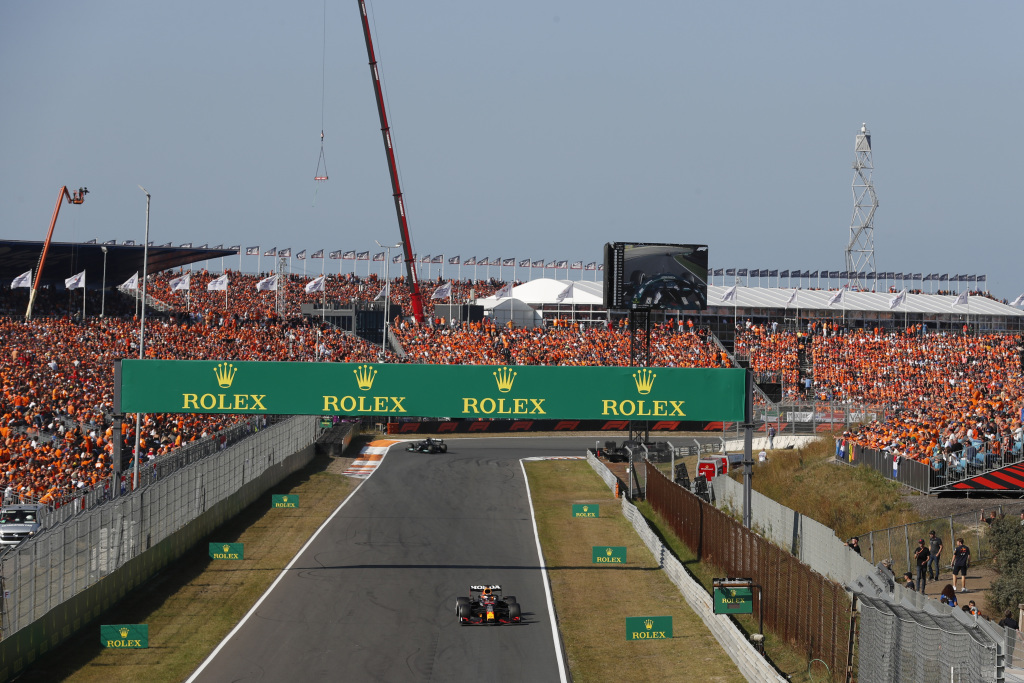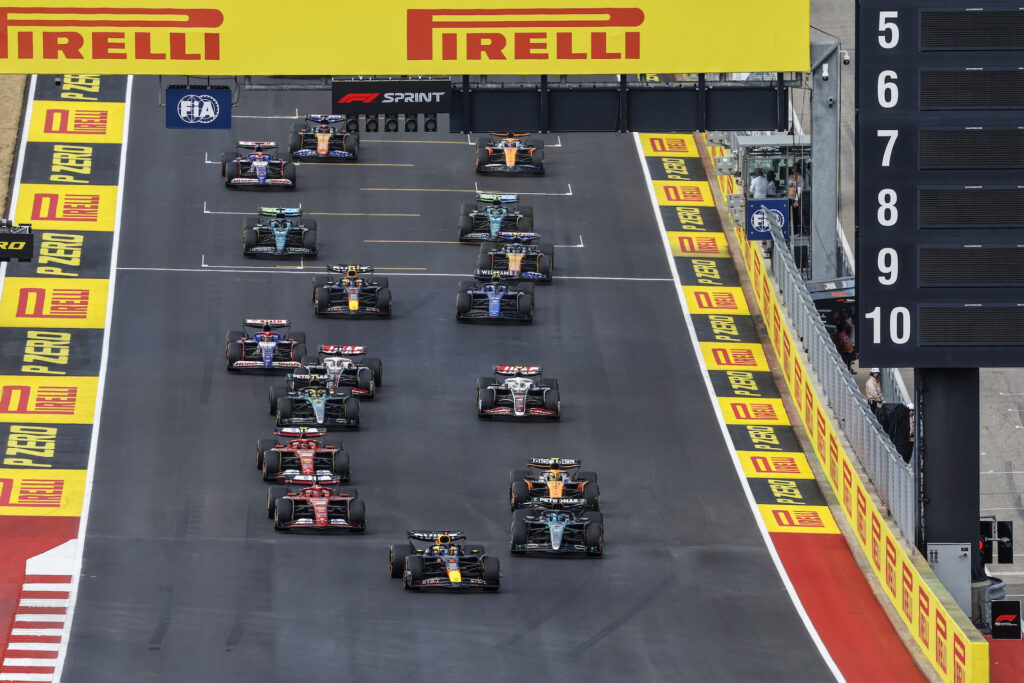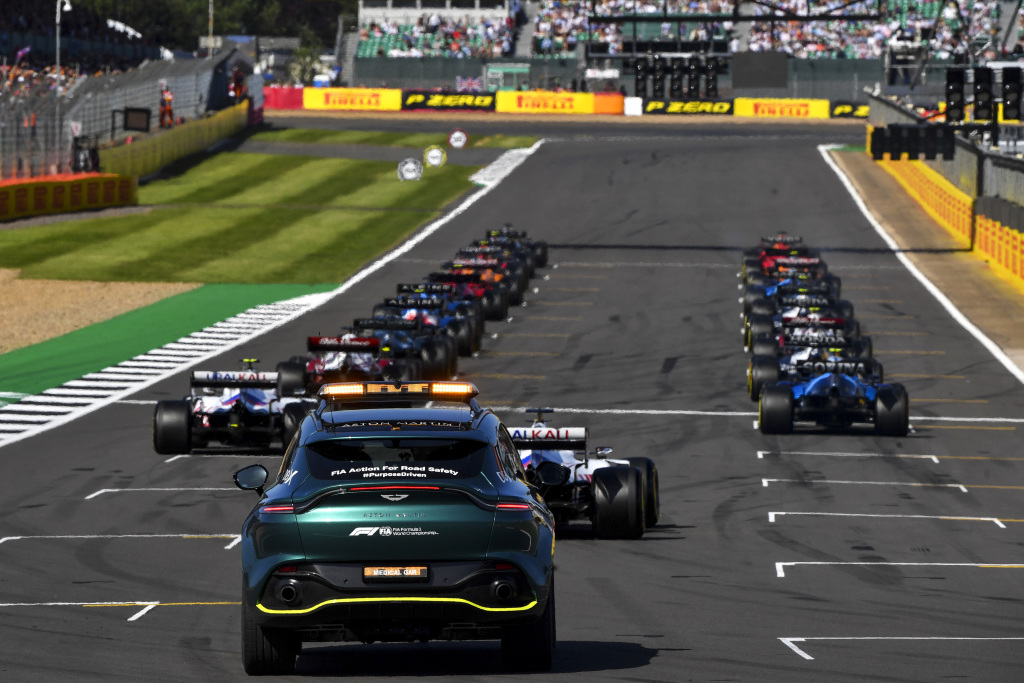The 2026 F1 sprint races promise to bring even more excitement and action to the Formula 1 calendar. With new venues like Montreal, Zandvoort, and Singapore joining the lineup, fans can look forward to fast-paced racing across six electrifying weekends.
Sprint races have quickly become a highlight of the F1 season, offering shorter, high-intensity competitions that set the stage for the main Grand Prix on Sunday. In this guide, we’ll break down the full sprint race calendar, explain the weekend format, and share what fans need to know for the 2026 season.
🎟️ Book Formula 1 tickets for the 2026 season now!
Where are the 2026 F1 Sprint Races?
In 2026, the number of Sprint Races will remain at six, continuing to deliver high-intensity action throughout the season.
| Race | Sprint Race date | Grand Prix date |
|---|---|---|
| Chinese Grand Prix 🇨🇳 | 14 March | 15 March |
| Miami Grand Prix 🇺🇸 | 2 May | 3 May |
| Canadian Grand Prix 🇨🇦 | 23 May | 24 May |
| British Grand Prix 🇬🇧 | 4 July | 5 July |
| Dutch Grand Prix 🇳🇱 | 22 August | 23 August |
| Singapore Grand Prix 🇸🇬 | 10 October | 11 October |
Calendar headlines
The 2026 Formula 1 season will once again feature six Sprint weekends, balancing familiar favourites with exciting new destinations. Shanghai and Miami continue their role as Sprint hosts after strong receptions in previous years, while Silverstone makes a long-awaited return to the format for the first time since 2021.
Adding fresh intrigue to the calendar are three brand-new Sprint venues: Montreal, Zandvoort, and Singapore. Together, these tracks promise a dynamic mix of high-speed challenges and unique atmospheres, ensuring the Sprint remains one of the most thrilling elements of the modern F1 weekend.

What is a F1 Sprint race and how does it work?
On certain Formula 1 weekends, fans can enjoy an added spectacle: the Sprint. This shorter race – around one third the length of a Grand Prix – brings fast-paced action to Saturday and adds even more excitement to the weekend.
To set the grid for the Sprint, a dedicated qualifying session called the Sprint Shootout takes place on Friday. It’s a condensed version of traditional qualifying, designed to quickly decide starting positions. While drivers can still collect championship points from the Sprint, it no longer determines the grid for Sunday’s Grand Prix. That responsibility lies with the full qualifying session, now held on Saturday afternoon after the Sprint.
Each Sprint Race covers roughly 100km (62 miles), typically lasting around 30 minutes but never exceeding an hour. The number of laps varies depending on the circuit: shorter tracks require more laps, while longer layouts demand fewer, with both formats ending up at a similar overall duration.
How does F1 Sprint qualifying work?
Sprint qualifying, now branded as the Sprint Shootout, is a shortened version of the traditional qualifying session and is used to set the starting order for the Sprint Race.
Since its introduction in 2023, the Sprint Shootout has been held on Friday afternoon, with the Sprint itself taking place the following day. The structure mirrors standard qualifying, but the three phases are renamed SQ1, SQ2, and SQ3. Each stage is also quicker, lasting 12, 10, and 8 minutes respectively, compared to the longer 18, 15, and 12 minutes seen in regular qualifying.

Do drivers earn points for winning the Sprint Race?
In the Sprint, the top eight finishers earn championship points, adding extra stakes to Saturday’s action. This system is more generous than the original 2021 format, when only the first three drivers were rewarded, creating greater incentive for the whole field to push harder and race more competitively.
| Position | Points |
|---|---|
| 1st | 8 |
| 2nd | 7 |
| 3rd | 6 |
| 4th | 5 |
| 5th | 4 |
| 6th | 3 |
| 7th | 2 |
| 8th | 1 |
Will there be any changes to the Sprint format in the future?
Formula 1 is weighing up fresh changes to its sprint race format, with the most radical proposal being the introduction of reverse grids as early as 2027. The concept, already used in feeder series like F2 and F3, would see championship leaders starting from the back, forcing them to fight their way through the pack.
Supporters argue it could inject more excitement, overtaking, and unpredictability into sprint weekends, particularly for younger fans who crave drama. But critics – including several leading drivers – believe reverse grids undermine the sport’s integrity and highlight car performance gaps rather than level the playing field.
2026 F1 Sprint tickets
Be there for the action! Tickets are now on sale for several 2026 Formula 1 weekends with Sprint Races, giving fans more on-track battles and wheel-to-wheel drama than any other race weekend.
